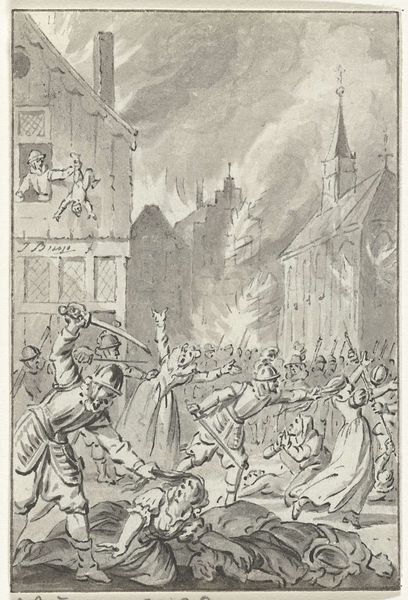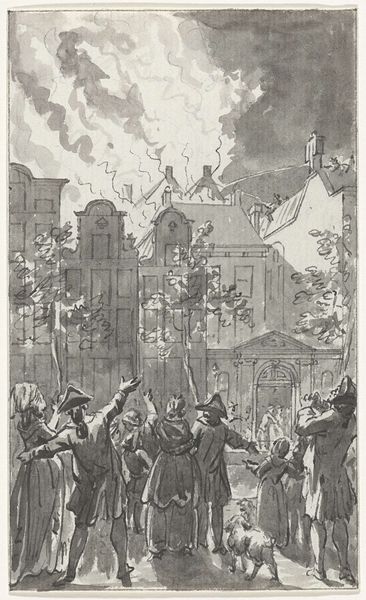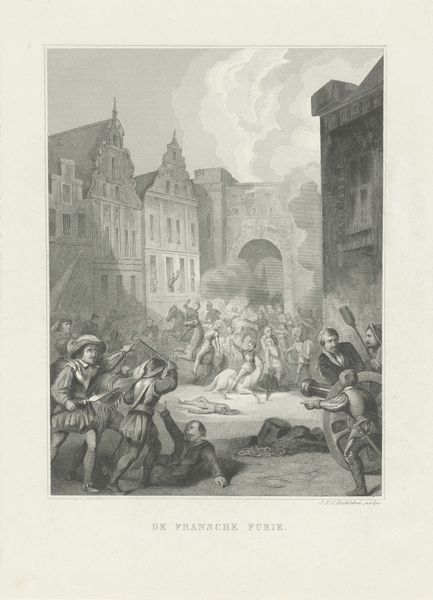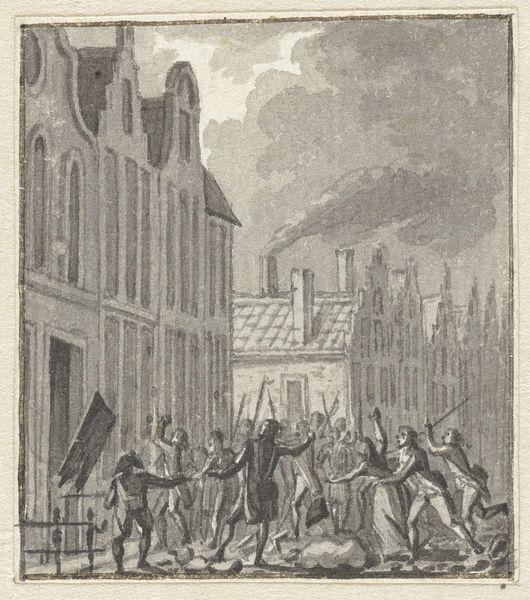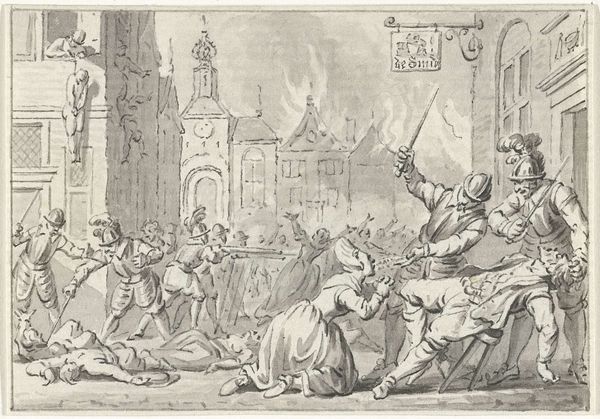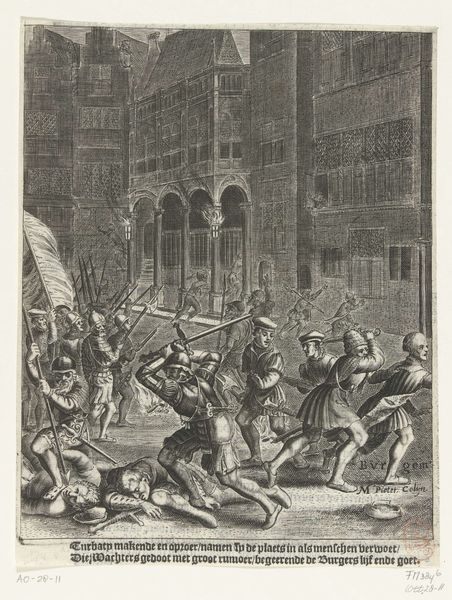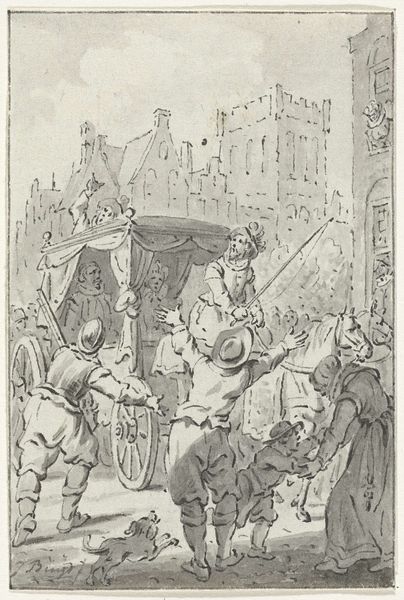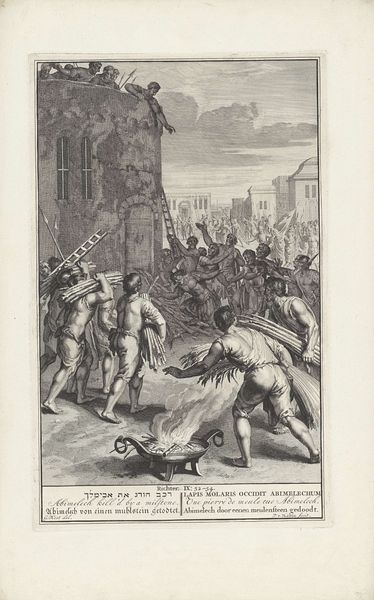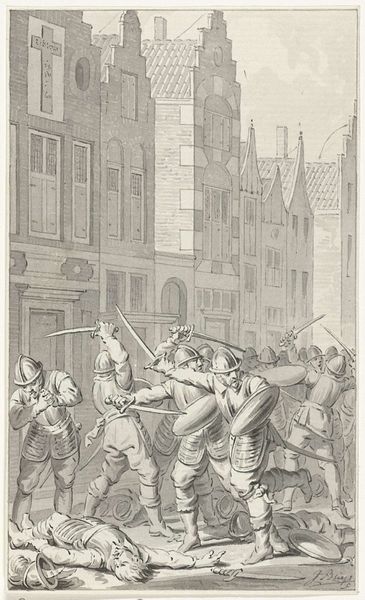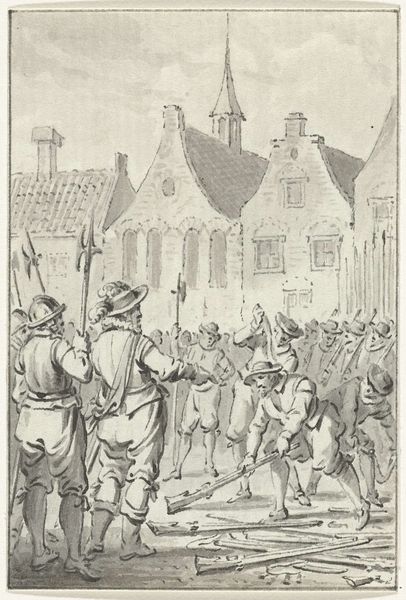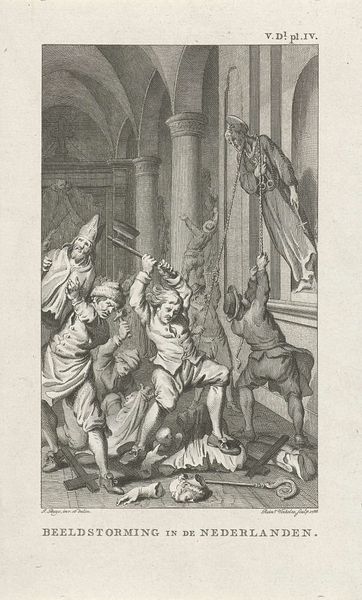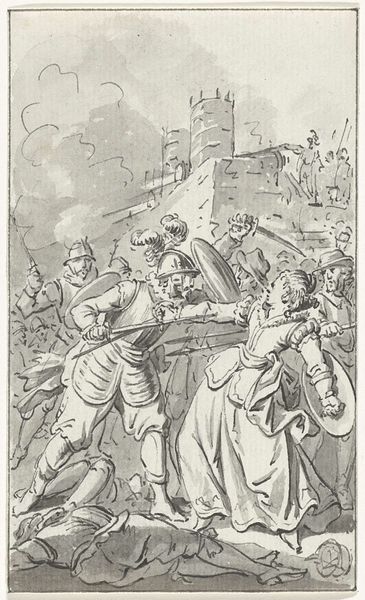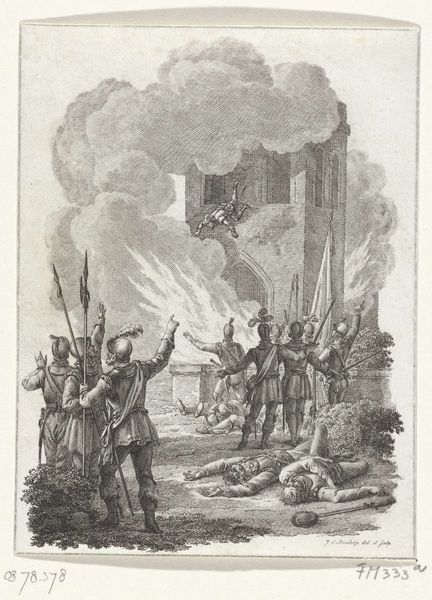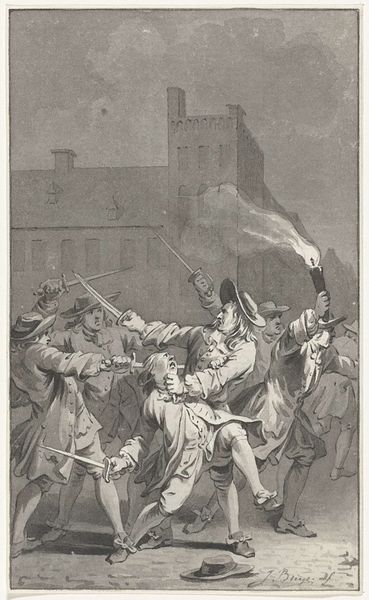
De verwoesting van het paleis te Nijmegen door de Noormannen, 881 1778 - 1795
0:00
0:00
jacobusbuys
Rijksmuseum
Dimensions: height 82 mm, width 56 mm
Copyright: Rijks Museum: Open Domain
Editor: This is Jacobus Buys’ drawing, "The destruction of the palace at Nijmegen by the Normans, 881," made between 1778 and 1795 with ink on paper. There's something chilling about the way it depicts such a brutal moment with a delicate medium. How do you interpret this work in light of its historical context? Curator: It's interesting how Buys, working centuries later, visualizes this historical event. We must consider the context in which it was made. This drawing, though seemingly a historical record, is also very much a product of the late 18th century. How might contemporary notions of nationhood and heroism have shaped this representation of the Viking invasion? Editor: That's a great point. The romanticised figures seem to echo classical ideals. Do you see a commentary on power structures within the drawing itself? Curator: Absolutely. Consider the 'heroic' stances of the Norman invaders amidst the destruction. Whose perspective are we being invited to adopt? Is Buys glorifying violence, or critiquing it? And how might that reflect the Netherlands' own struggles with power and identity during that period? It seems that the invasion almost romanticises the battle and diminishes the value of human life. Editor: I never considered the possible glorification. It definitely gives me a lot to consider about the cultural impact. Curator: Indeed, examining the artist’s intentions behind depicting violence helps contextualize the historical narrative. Consider art’s role in both reflecting and shaping social attitudes, and what seems like the romanticisation of an invasion. It brings to the foreground many important ethical questions. Editor: Thank you. I'm now viewing this through a different lens, realizing it's not just a historical depiction, but a reflection on power and identity. Curator: Precisely, this is how art acts as an archive of cultural thought and the ever-present struggle against marginalisation and systemic abuse.
Comments
No comments
Be the first to comment and join the conversation on the ultimate creative platform.
